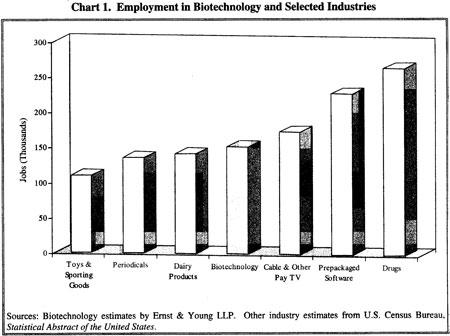Emerging Dynamics in Global Biotechnology: How ChinaŌĆÖs Rise Challenges U.S. Leadership and the Bay AreaŌĆÖs Future
Global Biotechnology Landscape: ChinaŌĆÖs Rapid Ascent and Its Impact on Innovation
Over the past decade, China has made remarkable strides in biotechnology, narrowing the gap with the United States, which has traditionally dominated this sector. Fueled by substantial government funding and a vibrant entrepreneurial environment, Chinese biotech hubs in cities like Beijing and Shanghai are rapidly gaining prominence. This intensifying rivalry threatens to erode the Bay AreaŌĆÖs long-standing supremacy, as capital and skilled professionals increasingly gravitate toward ChinaŌĆÖs expanding market.
Key factors propelling ChinaŌĆÖs biotech momentum include:
- Robust state-sponsored investments targeting cutting-edge fields such as gene editing, cellular therapies, and synthetic biology.
- Synergistic collaborations between government entities and private enterprises that expedite the commercialization of innovations.
- Attractive incentives designed to draw international experts and repatriate Chinese scientists trained abroad.
For the Bay Area, this evolving global competition necessitates accelerated innovation cycles and strategic adaptation. Without proactive measures, the region risks slowing the pace of breakthroughs that have historically driven both local economic vitality and global health progress. Additionally, concerns around intellectual property protection and the future of international biotech partnerships are becoming increasingly prominent.
| Biotech Focus | United States | China |
|---|---|---|
| Gene Editing | CRISPR, Base Editing | CRISPR, Prime Editing |
| Cellular Therapies | CAR-T, Induced Pluripotent Stem Cells (iPSC) | CAR-T, Natural Killer (NK) Cell Therapies |
| Synthetic Biology | Biofabrication, Enzyme Engineering | Metabolic Engineering, Bio-manufacturing |
Obstacles Confronting the Bay AreaŌĆÖs Biotech Sector Amid ChinaŌĆÖs Growing Influence
The Bay Area, once the uncontested leader in biotech innovation and commercialization, now faces mounting challenges as ChinaŌĆÖs biotech industry accelerates. Chinese companies benefit from extensive government backing, enabling them to conduct clinical trials more swiftly, navigate regulatory approvals with greater ease, and attract top-tier talent through competitive compensation and state-of-the-art facilities. Conversely, Bay Area firms are contending with tightening venture capital availability amid economic uncertainties and complex regulatory environments, which hamper their ability to sustain pioneering research and nurture emerging startups.
Several critical challenges illustrate this shifting balance:
- Talent Migration: High-caliber scientists and executives are increasingly enticed by lucrative opportunities and advanced infrastructure in China, leading to a depletion of local expertise.
- Cost Pressures: Rising operational and clinical trial expenses in the Bay Area contrast with ChinaŌĆÖs more cost-effective biotech ecosystems.
- Regulatory Speed: ChinaŌĆÖs accelerated drug approval mechanisms shorten the timeline from discovery to market, intensifying pressure on U.S. companies to quicken their innovation pace.
| Challenge | Effect on Bay Area | Chinese Edge |
|---|---|---|
| Capital Access | Reduced venture capital inflows | Substantial government funding |
| Talent Recruitment | Increased competition and brain drain | Competitive salaries and superior infrastructure |
| Regulatory Framework | Lengthy approval processes | Expedited regulatory pathways |
Policy Initiatives and Investment Priorities to Restore U.S. Biotech Competitiveness
Reestablishing U.S. leadership in biotechnology demands comprehensive policy reforms coupled with strategic investments. The current fragmented funding landscape and regulatory complexities are impeding innovation and the translation of research into market-ready products. Policymakers should focus on streamlining approval procedures and incentivizing research through enhanced tax credits and grant programs. Additionally, fostering biotech growth beyond Silicon Valley by supporting emerging hubs can diversify innovation and reduce regional vulnerabilities.
Critical investment areas requiring immediate focus include:
- Expanding collaborative public-private initiatives to speed up drug discovery and development.
- Strengthening workforce development through specialized training and education programs tailored to biotech needs.
- Upgrading infrastructure to support high-throughput laboratories and advanced computational biology capabilities.
- Investing in sustainable, scalable manufacturing technologies to meet future demand.
| Policy Measure | Expected Outcome | Implementation Timeline |
|---|---|---|
| Regulatory Overhaul | Accelerated drug approvals | 1-2 years |
| R&D Tax Incentives | Increased funding for innovation | Immediate |
| Workforce Development Grants | Robust talent pipeline | 3-5 years |
| Infrastructure Funding | Enhanced research and production capabilities | 2-4 years |
Enhancing U.S. Biotech Through Talent Cultivation and Global Partnerships
To regain a competitive edge, the U.S. must adopt a holistic strategy emphasizing talent development and international cooperation. Investing in STEM education from primary levels through advanced research training is essential to build a skilled workforce capable of driving biotech innovation. Creating supportive ecosystems for startups and facilitating smooth transitions from academic research to commercial ventures will further strengthen the sector.
Key approaches include:
- Augmenting funding for university-led research and specialized workforce training programs.
- Promoting public-private collaborations that foster cross-sector innovation.
- Establishing mentorship and internship initiatives connecting students with biotech enterprises.
- Encouraging continuous learning in emerging technologies such as CRISPR gene editing and AI-powered drug discovery platforms.
International partnerships remain vital for accelerating biotech progress. By cultivating strategic alliances with global leadersŌĆöincluding China, the European Union, and IsraelŌĆöthe U.S. can tap into diverse expertise, share critical data, and shorten innovation cycles. Streamlined visa policies that facilitate the recruitment and retention of international researchers will further enhance the Bay AreaŌĆÖs global competitiveness.
| Collaboration Focus | Advantages for U.S. Biotech |
|---|---|
| Joint Research Programs | Accelerated drug development and knowledge exchange |
| Talent Mobility Initiatives | Greater diversity and innovation capacity |
| Global Regulatory Alignment | Simplified clinical trials and approval processes |
Conclusion: Navigating the Future of Biotech Innovation in a Competitive Global Arena
As ChinaŌĆÖs biotechnology sector continues its rapid expansion, the Bay AreaŌĆÖs position as a premier innovation hub faces unprecedented challenges. Sustaining U.S. leadership will require decisive policy reforms, increased investment, and strengthened collaboration among industry, government, and academia. Without strategic action, the region risks losing its foothold in a critical industry that drives economic growth and technological progress, with far-reaching consequences for AmericaŌĆÖs global standing.




